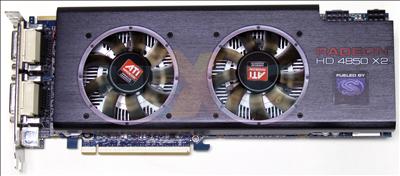The ever-zealous NVIDIA has had a triumphant start to 2009. Its ultra high-end GeForce GTX 295 has been deemed the fastest single-card graphics solution in the world, and it was promptly followed a week later by the GeForce GTX 285 - the fastest single-GPU solution in the world.
On paper, it should be a killer combination, but in reality, the aforementioned cards are just a dream for most users thanks to their asking price of £300 - £400. Silly money for a GPU, perhaps?
With AMD providing no immediate answer to NVIDIA's performance dominance, the red team seems to have found another way to counteract the green team's new monsters, and it's called the Sapphire Radeon HD 4850 X2.

This particular card launched back in November with a silly-money asking price of around £320. Today, perhaps in an effort to scupper NVIDIA's new performance-leading parts, the card's retail price has been drastically slashed to under £250. Still borderline-silly for the average consumer, but its sheer performance is such that competing parts priced up to £100 more offer little-to-no additional benefit.
Sapphire can't be making much of a profit on this particular part - in fact, it may even be making a loss - but it might be a small price to pay when NVIDIA's latest greatest are made to look hugely overpriced.













